In an environment where a cup of tea can cause chaos and a brand’s image can fall apart in minutes, the risks of social media are plenty. But with 3.5bn users across the globe, can operators afford to ignore the endless consumer access that socials provide? And should they really want to?
As Chancellor Rishi Sunak grinned next to an unnecessarily large bag of Yorkshire Tea and Jacob Rees-Mogg threw caution to the wind in clutching a single walkers crisp, social media managers everywhere groaned in solidarity.
“Look how relatable we are,” called the two men. “So normal!” Within minutes, Twitter warriors throughout the country were primed for battle. Yorkshire Tea, Walkers and Pringles (which committed the crime of simply sitting, unopened, on Reese-Mogg’s desk), were immediately inundated with online abuse.
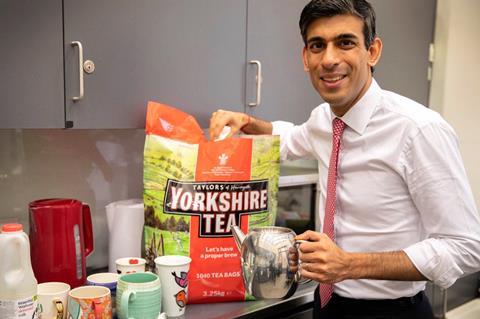
Not only do these events provide two shining examples of just how out of touch political press teams can be, they also serve to highlight the unpredictable and ever-delicate marketing minefield that social media has become.
Twitter is a “political battle ground,” says Daniel Hooper, co-founder at YesMore - a social media specialist that’s worked with operators including Carluccios, Be at One and Puttshack. “It’s a space for people to share opinions and thoughts, and get into arguments.”
It also has a “slightly larger risk factor than other platforms,” adds Dom Mernock, who’s worked with Whitbread, Boparan Restaurant Group and Heineken as strategy director at digital agency Engage. “It’s easy for audiences to find conversations about a brand, and if these conversations are negative it can encourage other consumers to engage and exacerbate the situation further.”
Globally, 84% of people with internet access use social media.
In June last year, following a negative experience at Wahaca, Sarah Hayward, the former Labour leader of Camden council, decided to issue a complaint in full view of her 7,000 followers.
The tweet read: “Hi @wahaca just eaten in your Kentish Town restaurant for the last time. Ppl next to us left without paying and their server is made to foot the bill from his wages. Apparently, company policy. Utterly shameful employment practice. Food is great, company is crap @thomasinamiers.”
Almost one in three consumers feel that social media is a convenient method to contact companies.
Just 24 hours later, restaurant founder Thomasina Miers responded to the tweet. She clarified that employee wage deduction was not standard practice, and that the incident in question was down to a misunderstanding of staff policy. Crisis averted? Not quite.
According to Smart Insights, 28% of consumers used social media last year to communicate with a company, and 37% of them, when complaining, expect a response in under 30 minutes.
By the time Miers tweet went live - 23 hours and 30 minutes later than that 30 minute window - Hayward’s original tweet had been retweeted 3,200 times and liked 8,200 times. Unite Union had branded the company a “wage thief,” various claims had poured in from disgruntled former employees and the story was trending in the national press.

After Miers spent a frantic couple of days responding to a barrage of accusatory tweets, Wahaca released an official statement. Although it previously made servers cover part of the bill in cases of “real negligence,” it said Wahaca would now scrap that rule in all cases but complicity.
“In this instance social media helped expose a situation where company policy needed to be reviewed and brought up-to-date,” reflects Wahaca CEO Mark Selby. “Thomasina and I were actually very grateful that it was brought to our attention so we could fix it quickly.”
This kind of public criticism can be very damaging, but Hooper argues there are valuable lessons to be learned, and as in the Wahaca case, “socials can push brands to do better.”
“But I do feel for them,” he adds. “They probably couldn’t respond right away because they were in panic mode.”
“What we see a lot with brands is they tend to hand their social media accounts to the youngest member of the team, or the fresh graduate, or the person they’ve just promoted from intern. One person behind a laptop works ok for certain things but when stuff like the Wahaca situation comes up it can bite you.”
Failing to respond to a complaint on social media has been found to decrease consumer advocacy by up to 50%.
To ensure best practice, “any social media department is going to need about nine people at the very least,” argues Mark McCulloch, whose agency Supersonic has worked on social with several operators including Costa and Bill’s.
“It’s getting to be big business and unfortunately the limits on budgets and marketers in food and drink make it difficult to make that work,” he says.
So, why not avoid socials altogether? Famously, in April 2018 Wetherspoons founder and chairman Tim Martin did just that.
True to character, Martin said the primary reason for going offline was to “go against conventional wisdom”. He didn’t, and doesn’t, feel that social platforms are a “vital component to a successful business,” citing trolling, data misuse and socials addictive nature as drivers for the move.
Wetherspoons insists the decision hasn’t harmed its consumer footfall. But with 78% of millennials now claiming that social media drives their business to brands, Hooper warns a long-term negative impact can’t be ruled out.
“Just because they didn’t notice a change in their footfall immediately after leaving social doesn’t mean it wasn’t effective,” he says. “It will be interesting to watch and see if there’s any change in newer drinkers joining their ranks in the coming years.”
And while brand fame and notoriety will have helped Wetherspoons stand by its decision, McCulloch adds that “eventually they might need to rethink the strategy.”
“Not being on social media is a massive risk and it depends what you’re doing it for,” he says. “If you’re saying that you’re going to keep the prices down by not being on social media then maybe. But at the moment, everyone’s faces are focused on their phone screens and every brand is fighting for sales.”
According to 40% of consumers, collaborating with a relevant non-profit is the best way for brands to take a public stand on social media.
As of January 2020, there were 3.5bn social media users across the globe. Unsurprisingly, millennials are leading the charge, with 84% saying that user generated content from previous visitors drive their decision to visit a restaurant, according to creative agency Adwaiz.
“Return on investment in social media is massive,” says Martin Giles, founder and CEO of social agency 3sixfive who has worked with operators including Wagamama, Greene King and Papa John’s. “It’s split in two ways. One is bums on seats, people booking and planning visits. And the second way is through reviews.”
“If a person has already built a review in their mind and is then encouraged to leave one through a conversation on social media with the brand, they’re more likely to put that review on Tripadviser. The better your reviews, the better your rank, the better your footflow.”
88% of people trust reviews they find online as much as personal recommendations.
But if you’re going to be on social channels, you have to do it properly, argues McCullough. “It’s good for brands to have content that creates a conversation, rather than just posting adverts or promotions that are wholly transactional,” he says.
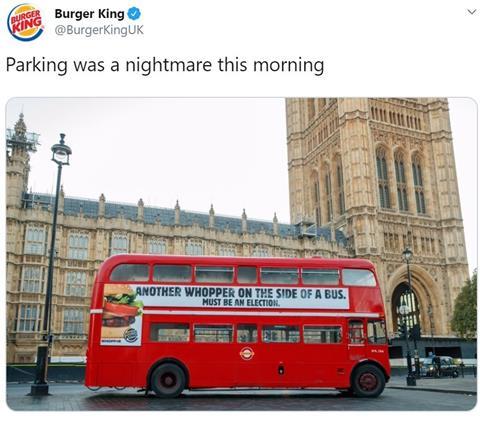
With controversial campaigns like its ‘Whopper battle bus’ stunt, Burger King has never been one to shy away from sparking a conversation.
“Burger King has a fantastic social strategy,” says Mernock. “They consistently pioneer new features in creative ways. They’re also unafraid to be bold and have a really unique personality on social.”
“Risky content often drives the best engagement. If a brand is confident in its core audience and their support, bold and divisive content is often key to a successful social media strategy.”
A direct comment on the Vote Leave Campaign’s ‘Brexit battle bus,’ in December last year Burger King UK tweeted a picture of a London red bus in front of the Houses of Parliament with the caption “Parking was a nightmare this morning.”
On the bus, next to a picture of its signature burger, an advert read: ‘Another Whopper on the side of a bus – must be an election.’ The tweet received hundreds of interactions, 2,300 retweets and 8,400 likes.
Given that 70% of consumers on Sprout Social’s 2019 Index feel it’s important for brands to take a public stand on social issues, this mass engagement isn’t necessarily surprising.
Equally unsurprisingly, the same survey reported 55% of consumers would boycott brands whose views don’t align with theirs, so while risky content works for Burger King, McCulloch argues it’s not necessarily the best route for all operators to go down.
“Burger King are so sure about what they’re all about and what they stand for and that gives them a tremendous amount of freedom within a framework. They’ve got that knack of being on just the right side of the line,” he says.
“Unfortunately, the limits on budgets and marketers in food and drink make it difficult to make that strategy work. Burger King is massive and so they can afford to do it well. If you’re two restaurants it can be really hard.”
Twitter users (47%) are more likely to prefer “culturally relevant” brands compared to consumers not on he platform (39%).
For those who aren’t in a position to satirise a hugely divisive political campaign, Hooper points out that other platforms can provide a less opinion-led, and thus less risky environment.
“Instagram is one of the most popular social media channels at the moment and it’s very visually led,” he says. “Depending on the content you’re probably less likely to get in trouble there if you’re just posting beautiful pictures of your offering.”
Instagram currently has over 1 billion users - 90% of which follow a business on the platform - and given its massive growth rate of 42% in the past three years, Hooper predicts the industry’s future is set to look filtered.
“Instagram has sparked a level of creativity in consumers,” he says. “Everyone’s a photographer or a videographer and that isn’t going to go away, it’s just about in what format it’ll go out on in the next ten years. That’ll be completely dependent on the next stages in innovation from the big tech brands.”
92% of all Instagram users say they’ve followed a brand, clicked on its website, or made a purchase after seeing a product or service on the platform.
And in the form of in-app purchasing, these ‘next stages’ are working. For Mernock, the convergence of Instagram, Facebook and point of sale will not only increase usage for consumers but, for those brands who assign social media management to the newest, youngest, or most inexperienced member of the team, it will emphasise the role of socials as a necessary marketing tool.
“It will lead to a shift in objectives with followers and engagement more frequently covered in reporting by conversions,” he says. “It’s going to make it much easier for social media managers to justify business investment.”
“Love it or hate it, social media is going to be around for a long time,” adds Giles. “Hospitality brands need to be on social media because their customers, and even the customers they don’t know they have yet, are all on social media. Brands have got to embrace it, because if they don’t, they’re just going to get left behind.”
Facebook fosters a global consumer community, Instagram provides a never-ending visual menu and Twitter a real-time company-to-consumer chatroom. Utilised to their full potential, socials can give a brand personality, image, and voice.
The risks are plenty: socials are unpredictable, painfully public, and have the ability to make or break an operator’s reputation before even the angriest baby boomer can ask to speak to the manager. But with 45% of the world’s population active across various platforms, in the case of most brands (even Wetherspoons), underestimating the long-term value of socials may be the biggest risk of all.
Precis
LONG READ
Getting social - the risks and rewards
As Chancellor Rishi Sunak grinned next to an unnecessarily large bag of Yorkshire Tea and Jacob Rees-Mogg threw caution to the wind in clutching a single walkers crisp, social media managers everywhere groaned in solidarity.“Look how relatable we are,” called the two men, “so normal!” Within minutes, Twitter warriors throughout the country were primed for battle. Yorkshire Tea, Walkers and Pringles (which committed the crime of simply sitting, unopened, on Reese-Mogg’s desk), were immediately inundated with online abuse. Not only do these events provide two shining examples of just how out of touch political press teams seem to be, they also serve to highlight the unpredictable and ever-delicate marketing minefield that social media has become.






























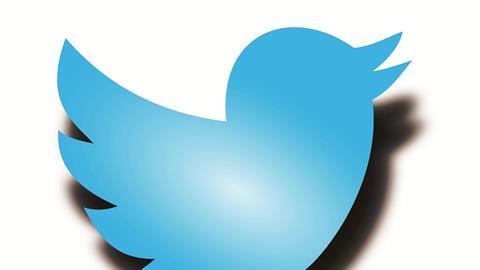
![Burger King Swindon_20_web[52]](https://d36hgjhwuw81py.cloudfront.net/Pictures/380x253/8/0/6/379806_burgerkingswindon_20_web52_81140.jpg)
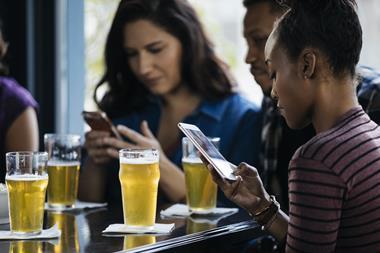

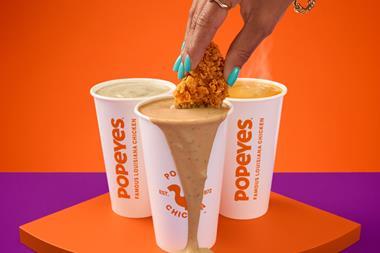

![RC-561[1]](https://d36hgjhwuw81py.cloudfront.net/Pictures/380x253/5/6/3/378563_rc5611_987001.jpg)







